Neutrophil recruitment limited by high-affinity bent β2 integrin binding ligand in cis
- PMID: 27578049
- PMCID: PMC5013657
- DOI: 10.1038/ncomms12658
Neutrophil recruitment limited by high-affinity bent β2 integrin binding ligand in cis
Abstract
Neutrophils are essential for innate immunity and inflammation and many neutrophil functions are β2 integrin-dependent. Integrins can extend (E(+)) and acquire a high-affinity conformation with an 'open' headpiece (H(+)). The canonical switchblade model of integrin activation proposes that the E(+) conformation precedes H(+), and the two are believed to be structurally linked. Here we show, using high-resolution quantitative dynamic footprinting (qDF) microscopy combined with a homogenous conformation-reporter binding assay in a microfluidic device, that a substantial fraction of β2 integrins on human neutrophils acquire an unexpected E(-)H(+) conformation. E(-)H(+) β2 integrins bind intercellular adhesion molecules (ICAMs) in cis, which inhibits leukocyte adhesion in vitro and in vivo. This endogenous anti-inflammatory mechanism inhibits neutrophil aggregation, accumulation and inflammation.
Figures
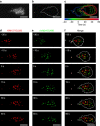

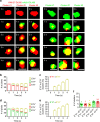
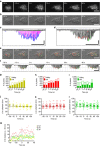
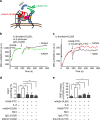

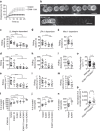
Similar articles
-
Kindlin-3 recruitment to the plasma membrane precedes high-affinity β2-integrin and neutrophil arrest from rolling.Blood. 2021 Jan 7;137(1):29-38. doi: 10.1182/blood.2019003446. Blood. 2021. PMID: 32777822 Free PMC article.
-
High-Affinity Bent β2-Integrin Molecules in Arresting Neutrophils Face Each Other through Binding to ICAMs In cis.Cell Rep. 2019 Jan 2;26(1):119-130.e5. doi: 10.1016/j.celrep.2018.12.038. Cell Rep. 2019. PMID: 30605669 Free PMC article.
-
Molecular Insights Into Neutrophil Biology From the Zebrafish Perspective: Lessons From CD18 Deficiency.Front Immunol. 2021 Sep 7;12:677994. doi: 10.3389/fimmu.2021.677994. eCollection 2021. Front Immunol. 2021. PMID: 34557186 Free PMC article.
-
β2 Integrin Signaling Cascade in Neutrophils: More Than a Single Function.Front Immunol. 2021 Feb 18;11:619925. doi: 10.3389/fimmu.2020.619925. eCollection 2020. Front Immunol. 2021. PMID: 33679708 Free PMC article. Review.
-
Intracellular β2 integrin (CD11/CD18) interacting partners in neutrophil trafficking.Eur J Clin Invest. 2018 Nov;48 Suppl 2:e12966. doi: 10.1111/eci.12966. Epub 2018 Jun 29. Eur J Clin Invest. 2018. PMID: 29896791 Review.
Cited by
-
Biomechanics of Neutrophil Tethers.Life (Basel). 2021 May 31;11(6):515. doi: 10.3390/life11060515. Life (Basel). 2021. PMID: 34073130 Free PMC article. Review.
-
Nanoscopic Characterization of Cell Migration under Flow Using Optical and Electron Microscopy.Anal Chem. 2023 Jan 10;95(3):1958-66. doi: 10.1021/acs.analchem.2c04222. Online ahead of print. Anal Chem. 2023. PMID: 36627105 Free PMC article.
-
Immune Cell Plasticity in Inflammation: Insights into Description and Regulation of Immune Cell Phenotypes.Cells. 2022 Jun 2;11(11):1824. doi: 10.3390/cells11111824. Cells. 2022. PMID: 35681519 Free PMC article. Review.
-
Integrin Regulators in Neutrophils.Cells. 2022 Jun 25;11(13):2025. doi: 10.3390/cells11132025. Cells. 2022. PMID: 35805108 Free PMC article. Review.
-
Humanized β2 Integrin-Expressing Hoxb8 Cells Serve as Model to Study Integrin Activation.Cells. 2022 May 3;11(9):1532. doi: 10.3390/cells11091532. Cells. 2022. PMID: 35563841 Free PMC article.
References
-
- Iversen M. B. et al.. An innate antiviral pathway acting before interferons at epithelial surfaces. Nat. Immunol. 17, 150–158 (2016). - PubMed
Publication types
MeSH terms
Substances
Grants and funding
LinkOut - more resources
Full Text Sources
Other Literature Sources
Molecular Biology Databases

